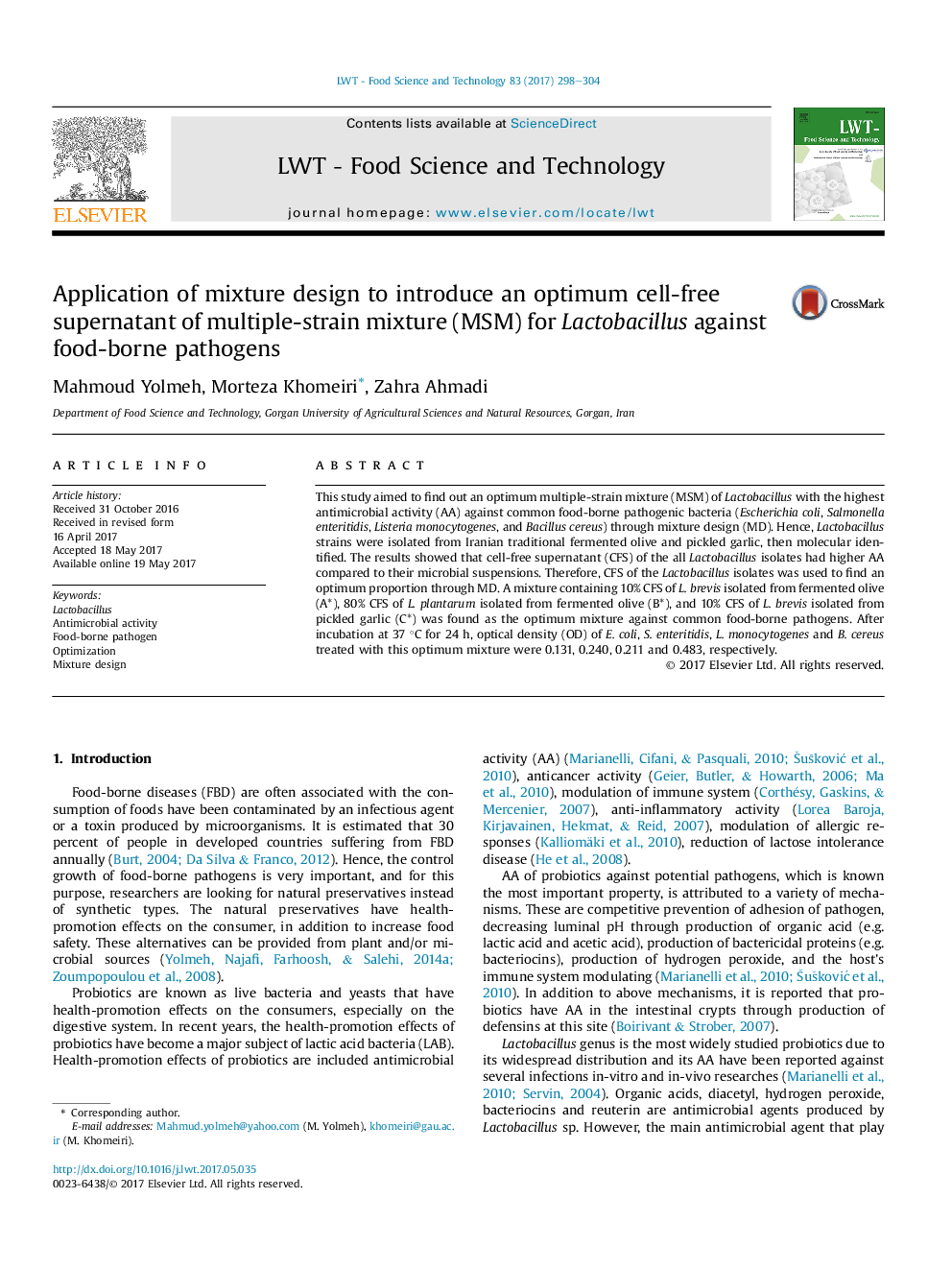| Article ID | Journal | Published Year | Pages | File Type |
|---|---|---|---|---|
| 5769102 | LWT - Food Science and Technology | 2017 | 7 Pages |
â¢L. brevis and L. plantarum were detected as dominant LAB in Iranian fermented olive and pickled garlic.â¢Listeria monocytogenes had the highest sensitivity to the Lactobacillus isolates.â¢CFS of the all Lactobacillus isolates had higher AA compared to their microbial suspensions.â¢A mixture containing 10% A*, 80% B*, and 10% C* was found as the best mixture against pathogens.â¢The MD was successfully used to find an optimum MSM with high AA against pathogens.
This study aimed to find out an optimum multiple-strain mixture (MSM) of Lactobacillus with the highest antimicrobial activity (AA) against common food-borne pathogenic bacteria (Escherichia coli, Salmonella enteritidis, Listeria monocytogenes, and Bacillus cereus) through mixture design (MD). Hence, Lactobacillus strains were isolated from Iranian traditional fermented olive and pickled garlic, then molecular identified. The results showed that cell-free supernatant (CFS) of the all Lactobacillus isolates had higher AA compared to their microbial suspensions. Therefore, CFS of the Lactobacillus isolates was used to find an optimum proportion through MD. A mixture containing 10% CFS of L. brevis isolated from fermented olive (A*), 80% CFS of L. plantarum isolated from fermented olive (B*), and 10% CFS of L. brevis isolated from pickled garlic (C*) was found as the optimum mixture against common food-borne pathogens. After incubation at 37 °C for 24 h, optical density (OD) of E. coli, S. enteritidis, L. monocytogenes and B. cereus treated with this optimum mixture were 0.131, 0.240, 0.211 and 0.483, respectively.
